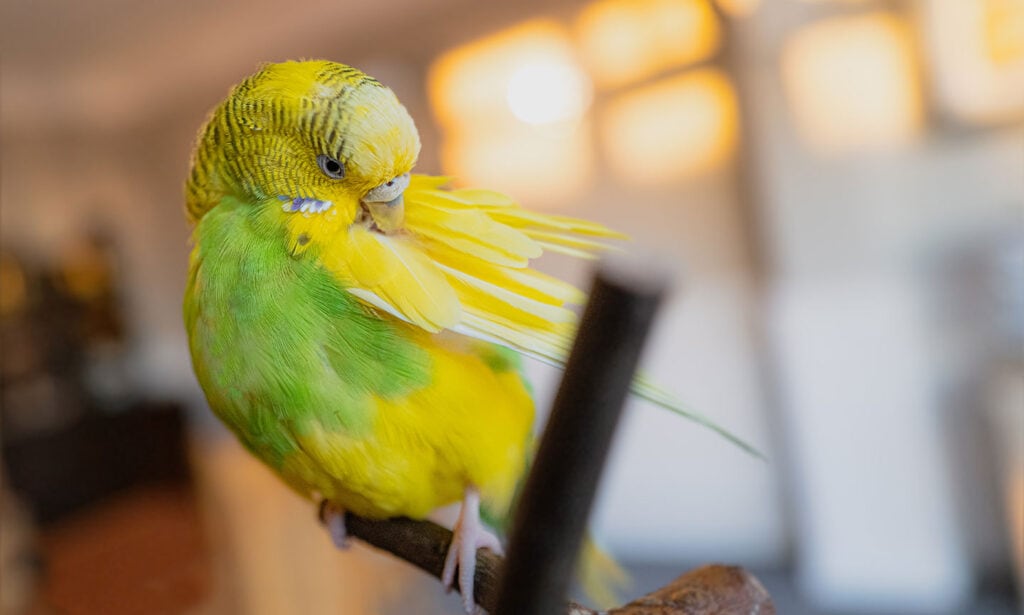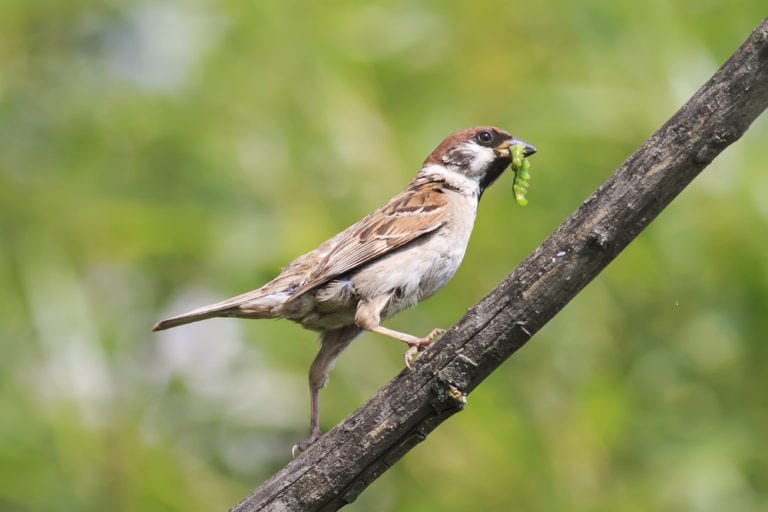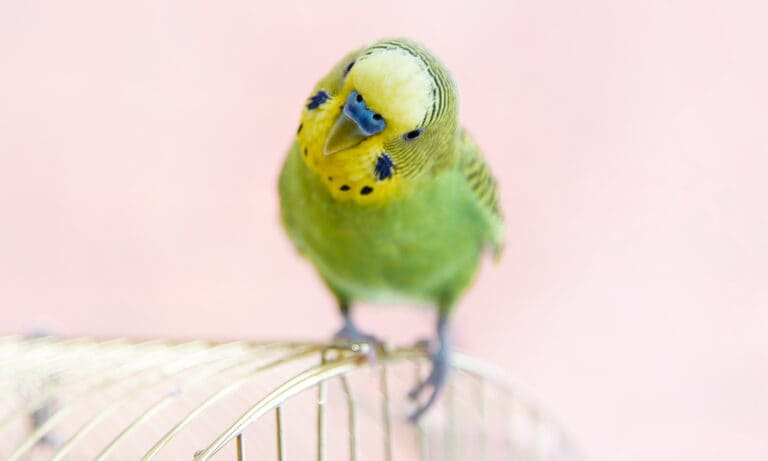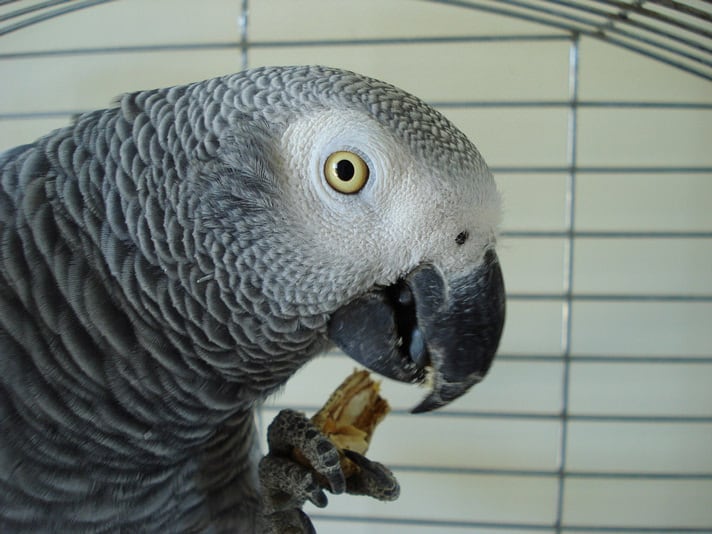Is your feathered friend itchy? Mouth breathing? Developing a crusty beak? They could have bird mites, a type of parasite that feeds off your bird and can cause a host of issues for them.
We spoke with Dr. Laurie Hess, DVM, an avian veterinarian with 30 years experience, to learn what signs to watch for, how bird mites are typically treated and how you can prevent these tiny pets from wreaking havoc in the first place.
What are bird mites?
Mites are microscopic parasites that feed on bird blood; they can’t survive long without it. They’re spread via bird-to-bird contact, and depending on the species, can cause skin, feather and respiratory tract problems. We’re focusing on the three mite species most likely to affect pet birds such as canaries, finches, sparrows, budgerigars (aka parakeets), cockatiels and parrots.
3 Common Bird Mites
Scaly Face and Leg Mites
These burrowing parasites, also known as Knemidokoptes, tend to live in skin that doesn’t have feathers, like the cere (the fleshy mound above the beak where the nostrils are), and on and surrounding the beak, legs and feet.
Different scaly face and leg mite species are attracted to different bird species, but all cause similar symptoms, such as skin crustiness, which can look like a honeycomb to the naked eye.
These mites most often affect small birds such as budgies, canaries, and finches. “I don’t typically see scaly face and leg mites on a big cockatoo,” says Dr. Hess, who works at Veterinary Center for Birds & Exotics in Bedford Hills, New York. It doesn’t mean it can’t happen, but it’s less likely to.
Air Sac Mites
These mites live in the bird’s airways and air sacs. For the uninitiated, air sacs are compartments inside birds’ bodies that hold air and help oxygenate the animal. Air sac mites are most common in small birds and cause respiratory irritation.
Feather Mites
These bird mites live and feed on skin and feathers, and tend to target under the wings but can be present anywhere. Itchy feather mite infestations are more common in poultry and wild birds and less common in indoor birds, but it’s still worth knowing the signs and symptoms. “I’ve been an avian veterinarian for 30 years, and I’ve only seen a couple of feather mite cases,” Dr. Hess explains. Feather mites are sometimes called “red mites.”
Signs of Bird Mites
How to tell if your pet bird has scaly face and leg mites:
- Your bird’s beak, nostrils or feet are crusty. Your bird can have gray or white scaliness on one appendage or the other or both. Don’t confuse scaly face and leg mites with brown hypertrophy, a normal hormonal event that causes female birds’ cere (the fleshy area around the nostrils) to get brown and scaly.
- Your bird’s beak, toes or feet are deformed. If left untreated, your bird can become permanently disfigured. For example, scaly face and leg mites can also cause tassel foot, “an accumulation of the scaliness on the feet so it looks like a tassel on the toe,” explains Dr. Hess.
How to tell if your pet bird has air sac mites:
- Your bird has labored breathing. They might breathe faster than usual. Their mouth will be open constantly, and they’ll gasp for breath. They might sneeze and wheeze. “If you see your bird having trouble breathing, you need to go to a veterinarian right away,” says Dr. Hess.
- Your bird looks unkempt. Because birds with air sac mites have difficulty breathing, they can become so fixated on trying to get air that they stop preening. Looking slightly ruffled isn’t necessarily cause for concern (they could just be molting), but healthy birds’ feathers should be lustrous, bright, and shiny.
- The vet sees black spots in your bird’s trachea. If an infestation is particularly bad, your vet can confirm the infection via transillumination, a process that involves wetting your bird’s neck skin with alcohol and shining a light against one side of the body. Your vet can see air sac mites crawling in your bird’s airways in cases of advanced infections. However, transillumination should not be regarded as a comprehensive diagnostic test as there is a possibility that your veterinarian may not observe any visible signs despite your bird still being infected.
How to tell if your pet bird has skin and feather mites:
- Your bird is restless, particularly at night. Your bird might get agitated from skin irritation. Some mites live in the cage and hop on the bird at night. “The birds get crazily itchy, even frenetic,” says Dr. Hess.
- Your bird preens excessively. Birds infested with feather mites may spend an extended amount of time self-grooming in an attempt to relieve irritation. Lookout for repetitive motions.
- Your bird’s feathers are damaged. All that preening might lead to frayed, broken, or discolored feathers that appear dull or ragged.
Note: If mites are left untreated, their many blood meals may leave your bird with too few red blood cells.
How to get rid of bird mites on your pet bird
Your first step should be to contact your vet and schedule an appointment if you see any symptoms of bird mites. Not only will they be able to confirm your bird has mites, but they can prescribe the necessary medication, as there are no home remedies for treating bird mites.
“When birds have mites—whether they’re air sac mites, scaly face and leg mites, feather mites—you have to see a veterinarian, get a drug and treat it appropriately because you can’t buy anything [over-the-counter] that’s going to fix it,” Dr. Hess says.
Do
Clean and Disinfect. You must disinfect your bird’s environment, particularly any crevices, no matter the type of mite:
- Clean any metal or plastic thoroughly with dish soap and hot water
- Throw out anything porous (such as wood and nest boxes) where mites, nymphs (the stage in a mite’s lifecycle before it becomes an adult), and eggs hang out.
Medical treatment doesn’t prevent your bird from being reinfected. If you return a treated bird to the same environment without eliminating porous surfaces, your bird can get reinfected.
Do Not
Try to treat the mites yourself. Treating mites yourself is ineffective and can be hazardous to your pet.
Dr. Hess explains: During preening, birds will ingest anything you spray on their feathers. Birds' respiratory tracts are sensitive, so sprays that are inhaled can cause severe reactions. And there’s no proof that homeopathic treatments like organic oils are all safe.
“I do not recommend you spray things on your bird,” she says.
How to prevent bird mites on your pet bird
Don’t keep too many birds in one cage, which can lead to stress-induced illness and infection. (A cage should be large enough for all inhabitants to spread and flap their wings in all directions and jump from one perch to another, according to the Avian Welfare Coalition.) Keep the environment clean, and fresh drinking water readily available. Happy, healthy birds are less likely to have a mite problem.
Whether your new bird is a rescue or from a store, prioritizing their health is essential. Take a new rescue or store-bought bird for a health check right away, as you would with a dog or a cat. Keep your new bird isolated from your existing birds and other household animals until you confirm that they are healthy. This precaution is necessary to prevent any potential harm, including the spread of mites or other health issues.
And FYI: Dr. Hess warns that mite protectors, those little circular discs you hang on the cage, are toxic and may cause liver disease. Stay away.
Can humans get bird mites?
Generally, no. Bird mites are species-specific, which means they likely won’t bite humans and can’t live on human blood alone. You could theoretically get a bird mite bite—which would look and cause itching similar to other insect bites—but it’s unlikely. Treat it like any other flea or bed bug bite: clean your skin and apply a topical steroid.
Will bird mites go away on their own?
No, and the longer you wait to diagnose and treat your pet, the more harm the mites might cause. “You can’t fix it at home, and you can’t diagnose it at home,” Dr. Hess says. “They’re so microscopic you have to look under the microscope to be sure. Many times, because we can’t see and it’s hard to catch, we will treat it even though we’re not 100% sure. If you do it safely, treating it has no downside,” she says.
The Bottom Line on Bird Mites
If caught and treated quickly by taking your pet to the vet, bird mites—while definitely gross—don't have to be scary. Soon your pet bird will be feeling better. And once they do, shower them with a little extra attention by playing a new game together. Here are five bird games we like.
Get more bird health advice:
Share:









